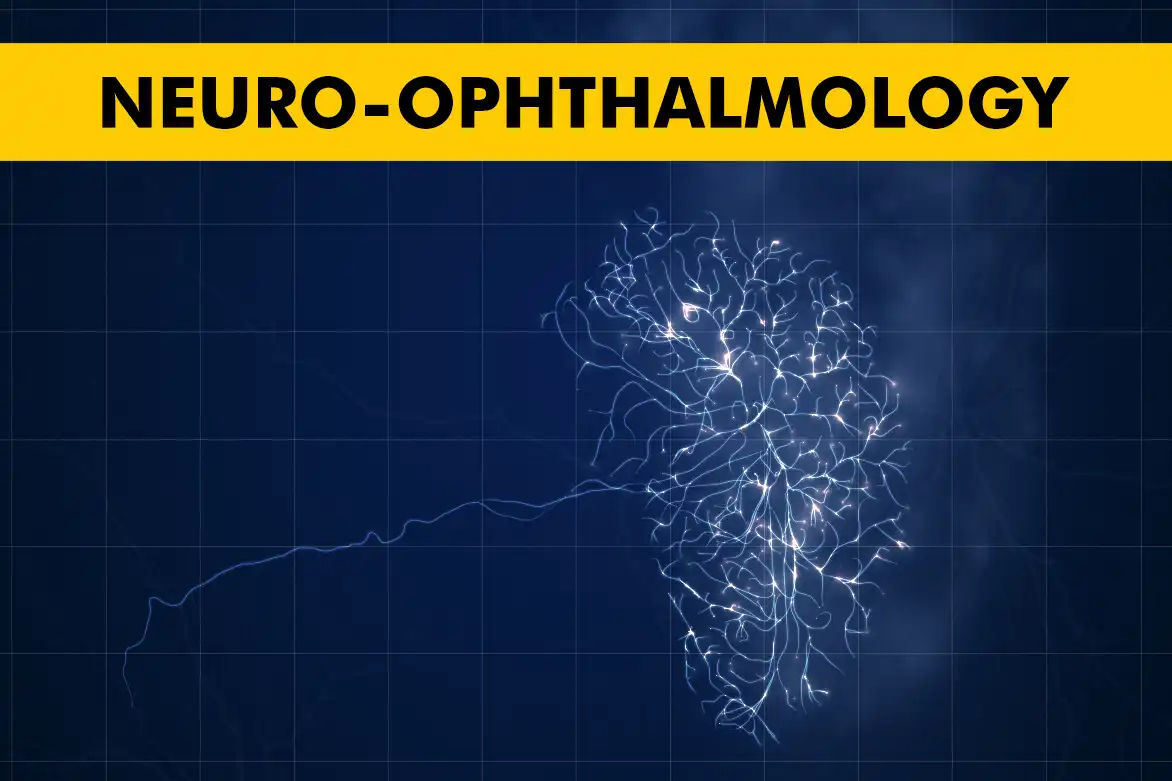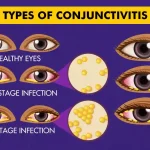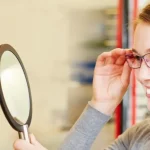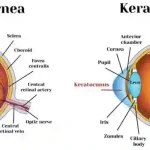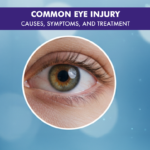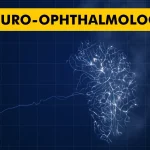|
Key Takeaways:
|
Neuro ophthalmology looks at how the brain and eyes work together, and what happens when this link is disturbed. Many people ignore or misread symptoms like double vision, droopy eyelids, or sudden vision loss, not realising they may point to brain or nerve problems rather than just “weak eyes.”
In this blog, you’ll understand the neuro ophthalmology meaning in simple terms, explore common disorders, tests, and treatment options, and know when it’s important to see a specialist.
Neuro Ophthalmology Meaning?
Neuro ophthalmology is a branch of eye care that looks at how the brain, optic nerve, and eye muscles work together to create vision. It focuses on visual problems that come from the nervous system, not just from the eye surface or the eye lens.
These involve the optic nerve (the “cable” that carries signals from the eye to the brain), eye movement control, or the parts of the brain that process what you see. When people search for neuro ophthalmology meaning, they usually want to know who to see if they have sudden double vision, droopy eyelids, or unexplained vision loss.
A neuro-ophthalmologist is an eye specialist with extra training in neurology, so they can connect eye symptoms with brain or nerve conditions and plan the right tests and treatment. This field is important because many brain and nerve problems first show up as eye symptoms.
Early diagnosis can help protect sight and, in some cases, pick up serious issues like stroke, brain tumours, or raised pressure in the brain at an early stage.
The Intersection of Neurology and Ophthalmology
The eyes and brain are deeply linked, and the optic nerve is like a high-speed cable between them. When something affects the brain, nerves, or muscles that control the eyes, it can show up as blurred vision, double vision, visual field loss, or abnormal eye movements.
These are called neuro-ophthalmology disorders because they sit at the border of neurology and eye care. In many cases, a neuro-ophthalmologist works closely with neurologists, neurosurgeons, radiologists, and sometimes rheumatologists or endocrinologists.
This team approach helps find the exact cause behind visual symptoms and ensures that both the eye and the underlying brain or nerve condition are treated in a coordinated way.
Common Neuro Ophthalmology Disorders and Their Symptoms
Neuro-ophthalmology diseases can affect vision and eye movement. Some common examples include:
- Optic neuritis: Inflammation of the optic nerve that can cause sudden vision loss, washed-out colours, and pain with eye movement. It can be linked with conditions like multiple sclerosis, neuromyelitis optica, or infections.
- Papilledema: Swelling of the optic nerve head due to raised pressure inside the skull. People have headaches (worse on waking), nausea, brief episodes of blurred or “greyed-out” vision, and sometimes double vision. Papilledema needs urgent evaluation because it can be a sign of serious brain disease.
- Myasthenia gravis (ocular type): An autoimmune disease that causes fluctuating weakness of the eye and eyelid muscles. Symptoms include drooping eyelids (ptosis), double vision that changes throughout the day, and tired-looking eyes, while the pupil remains normal.
- Cranial nerve palsies (III, IV, VI): Damage to the nerves that move the eyes can cause misalignment, double vision, and sometimes droopy eyelids or enlarged pupils. Causes range from small vessel disease (in diabetes or hypertension) to aneurysms, trauma, or tumours.
- Idiopathic intracranial hypertension (IIH): A condition of raised brain pressure without a visible tumour, more common in young women. Symptoms include headache, pulsatile tinnitus (“whooshing” in the ears), transient visual blurring, and papilledema on eye examination.
- Stroke or tumours affecting the visual pathways: These can cause sudden or gradual loss of part of the visual field (for example, not seeing on one side), along with other neurological symptoms like weakness, speech difficulty, or imbalance.
This list does not include every condition seen in neuro ophthalmology, but it shows how diverse the causes can be, from immune-related diseases and infections to vascular and structural brain problems.
Impact of Neuro Ophthalmology Disorders on Vision
Problems in neuro ophthalmology can change vision in many ways, and not always in a simple “blurred vision” pattern. People notice double vision, loss of part of their side vision, patches of missing vision, problems seeing in dim light, or colours that look faded.
Sometimes, the main complaint is a droopy eyelid, or the eyes look misaligned in photos. These changes can affect daily life more than people expect. Reading for long periods become tiring, driving can feel unsafe, and even walking in crowded places or on stairs can become difficult because of depth-perception or field-of-vision issues.
Some patients also feel anxious or low in mood when their vision suddenly changes, especially if the cause is not yet known. Because of this wide impact, early assessment and correct diagnosis are key.
With timely neuro ophthalmology treatment, many causes can be controlled or stabilised, and patients can learn ways to adapt, such as using special glasses, prisms, or vision rehabilitation to stay independent.
Diagnostic Techniques in Neuro-Ophthalmology
To understand what is happening, specialists use a mix of eye examination and brain-focused tests. These neuro ophthalmology tests are chosen based on symptoms and findings, and include:
- Comprehensive eye examination
Checking vision, colour vision, eye movements, pupils, and the back of the eye (optic nerve and retina) with a slit-lamp and dilated fundus exam.
- Visual field testing (perimetry)
A computerised test that maps how far you can see to the sides and whether there are blind spots or areas of reduced sensitivity. This helps detect optic nerve and brain pathway problems.
- Optical coherence tomography (OCT)
A scan that shows cross-section images of the retina and optic nerve. It helps measure nerve-fiber thickness and detect subtle swelling or thinning over time.
- Neuroimaging (MRI or CT scans)
MRI is commonly used to look at the brain, optic nerves, and orbits in detail, while CT is helpful in some emergencies or bone-related problems. These scans can detect tumours, strokes, inflammation, or structural changes.
- Blood tests and other investigations
Depending on the suspected cause, doctors advise blood tests for infections, autoimmune diseases, thyroid function, or clotting problems. In select cases, lumbar puncture is done to measure brain fluid pressure and analyse the fluid.
All these tests together help build a full picture so the doctor can decide whether the problem is mainly eye-related, brain-related, or both.
Neuro Ophthalmology Treatment
There is no single neuro ophthalmology treatment for all patients, because the right approach depends on the underlying cause. The main aim is to protect vision, treat the root problem, and improve quality of life.
Common treatment approaches include:
- Medicines
Steroids or other immunosuppressive drugs may be used for optic neuritis, myasthenia gravis, or inflammatory conditions. Medicines to lower brain pressure are used in idiopathic intracranial hypertension, while blood-thinning drugs or other therapies may be needed after certain strokes.
- Treating the underlying disease
Managing multiple sclerosis, infections, thyroid disease, high blood pressure, diabetes, or high cholesterol is a key part of neuro ophthalmology treatment. Good control can reduce the risk of further nerve or brain damage.
- Neuro ophthalmology surgery and procedures
When needed, neuro ophthalmology surgery involves removing brain tumours, treating aneurysms or vascular malformations, inserting shunts for high brain pressure, or performing eye muscle surgery to help align the eyes. In some patients, eyelid surgery or botulinum toxin injections is used to improve function and comfort.
- Vision aids and rehabilitation
Prisms in glasses can help reduce double vision, and low-vision aids can support reading and daily activities if part of the visual field is permanently affected. Vision rehabilitation programmes teach practical strategies to move safely, read better, and remain independent.
- Lifestyle and risk-factor changes
Stopping smoking, maintaining a healthy weight, regular exercise, and controlling blood pressure and diabetes all support better long-term nerve and brain health, which in turn protects vision.
The Importance of Early Detection and Regular Eye Exams
Early diagnosis is one of the most important parts of care in neuro ophthalmology. Sudden vision loss, new double vision, a drooping eyelid, or repeated brief episodes of blurred or “blackout” vision should never be ignored. These can be the early warning signs of a serious problem with the brain, optic nerve, or eye muscles.
Regular eye check-ups, especially if you have existing conditions like diabetes, high blood pressure, multiple sclerosis, or autoimmune disease, can help pick up changes before you notice major symptoms. When needed, neuro ophthalmology doctors can step in for a deeper evaluation and guide you through the right tests and treatment.
Conclusion
Neuro ophthalmology focuses on the vital link between the eyes and the brain, and helps explain many visual symptoms that simple glasses cannot fix. Conditions like optic neuritis, papilledema, myasthenia gravis, and cranial nerve palsies can affect daily life but are treatable when caught early.
If you notice sudden changes in vision, double vision, or drooping eyelids, it is important to seek a prompt eye and nerve evaluation. A eye specialist can guide you through the right tests, treatment options, and support so you can protect your sight and stay confident in everyday activities.
FAQs
What is neuro-ophthalmology?
Neuro-ophthalmology is a subspecialty that looks at how the eyes, optic nerves, and brain work together, focusing on visual problems that come from the nervous system rather than just from the eye surface or lens.
How do neuro-ophthalmologic disorders affect vision?
Neuro-ophthalmologic disorders affect vision by causing sudden or gradual vision loss, double vision, visual field defects, droopy eyelids, or colour and contrast changes that make daily tasks like reading or driving difficult.
What are the main symptoms of neuro-ophthalmologic conditions?
The main symptoms of neuro-ophthalmologic conditions include blurred or dim vision, double vision, loss of side vision, drooping eyelids, abnormal eye movements, and sometimes headaches or other neurological symptoms such as imbalance.
Which diagnostic tools are used in neuro-ophthalmology?
Diagnostic tools that are used in neuro-ophthalmology include a detailed eye exam, visual field testing, optical coherence tomography (OCT), and brain and orbit imaging, such as MRI or CT scans, along with blood tests or lumbar puncture when needed.
What treatments are available for neuro-ophthalmologic disorders?
Treatments available for neuro-ophthalmologic disorders range from medicines like steroids, immunosuppressants, or drugs to lower brain pressure, to surgery for tumours or high pressure, plus prisms, low-vision aids, and vision rehabilitation to help with long-term changes.
When should I see a neuro-ophthalmologist?
You should see a neuro-ophthalmologist if you have sudden vision loss, new double vision, a drooping eyelid, repeated transient “blackouts” of vision, or visual symptoms along with severe headaches or other neurological complaints.
What are the red flags in neuro-ophthalmology?
The red flags in neuro-ophthalmology include sudden loss of vision in one or both eyes, new double vision, severe headache with visual changes, sudden visual field loss, or rapidly worsening papilledema, all of which need urgent medical attention.
What are neuro-ophthalmology symptoms?
Neuro-ophthalmology symptoms can be as simple as intermittent blurred vision or as striking as persistent double vision, drooping eyelids, side-vision loss, difficulty focusing, or unexplained changes in how bright, sharp, or colourful things appear.
